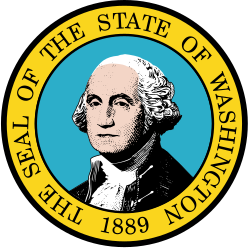This article needs additional citations for verification .(May 2019) |
Washington State Legislature | |
|---|---|
 | |
| Type | |
| Type | |
| Houses | Senate House of Representatives |
| Leadership | |
Senate President pro tempore | |
House Speaker | |
| Structure | |
| Seats | 147 49 senators 98 representatives |
 | |
Senate political groups | Majority Caucus
Minority Caucus
|
 | |
House of Representatives political groups | Majority
Minority
|
| Elections | |
Last Senate election | November 5, 2024 (24 seats) |
Last House of Representatives election | November 5, 2024 (98 seats) |
Next Senate election | November 3, 2026 (25 seats) |
Next House of Representatives election | November 3, 2026 (98 seats) |
| Meeting place | |
 | |
| Washington State Capitol Olympia | |
| Website | |
| leg | |
The Washington State Legislature is the state legislature of the State of Washington. It is a bicameral body, composed of the lower Washington House of Representatives, composed of 98 representatives, and the upper Washington State Senate, with 49 senators plus the lieutenant governor acting as president. [1] The state is divided into 49 legislative districts, each of which elect one senator and two representatives.
Contents
- History
- The Female Voting Franchise
- Statehood
- Meetings
- Television coverage
- Vacancies
- Compensation
- See also
- Further reading
- References
- External links
The state legislature meets in the Legislative Building at the Washington State Capitol in Olympia.
As of January 2025, Democrats control both houses of the Washington State Legislature. Democrats hold a 59–39 majority in the House of Representatives [2] and a 30–19 majority in the Senate. [3] [ unreliable source? ]
